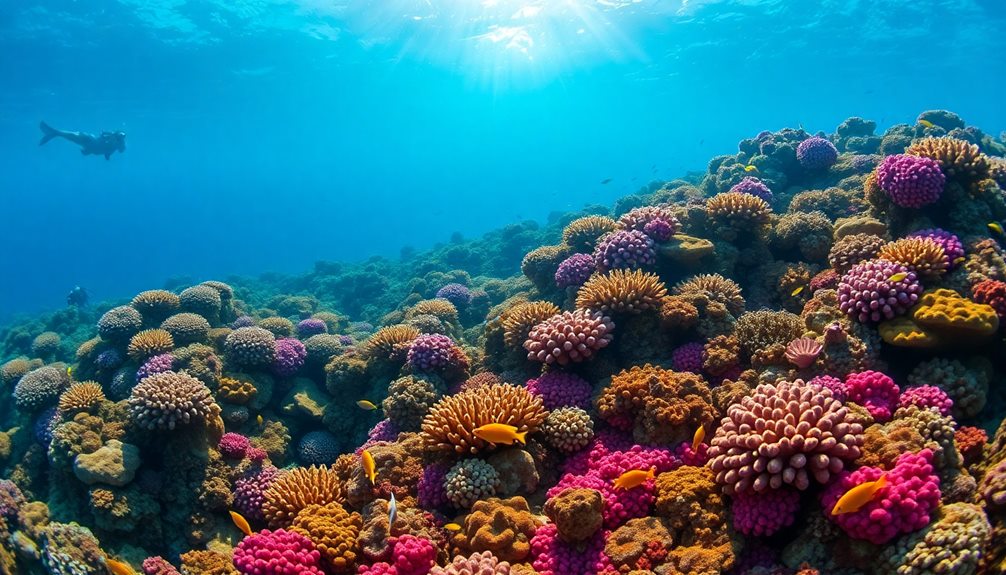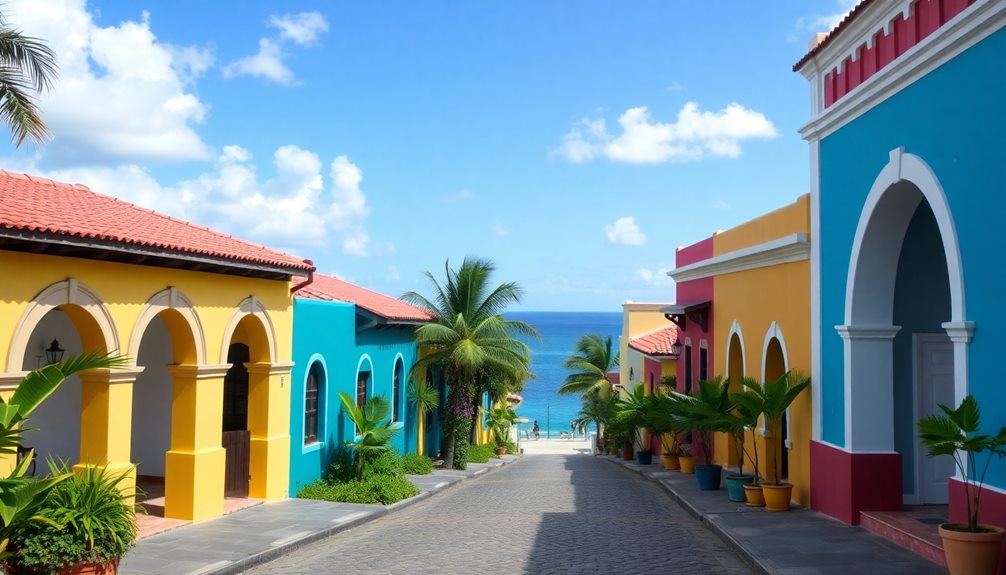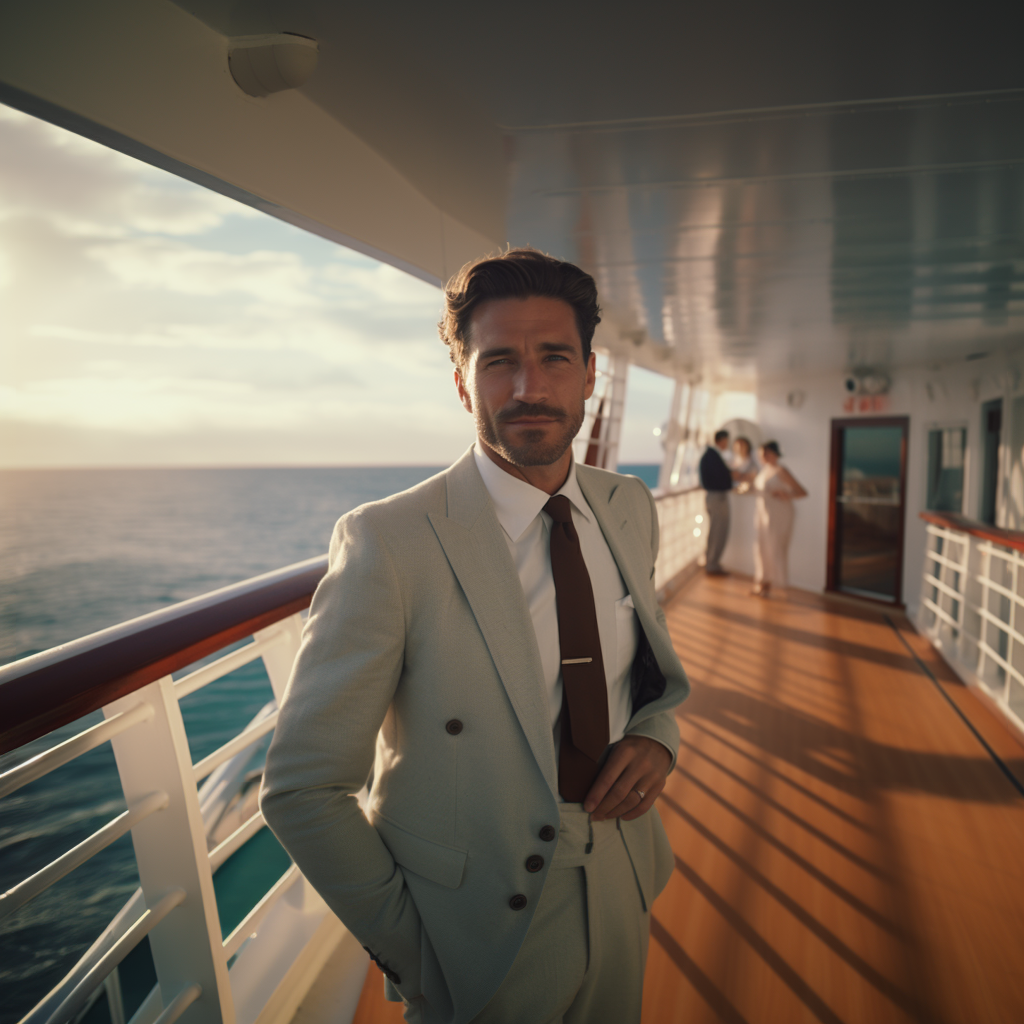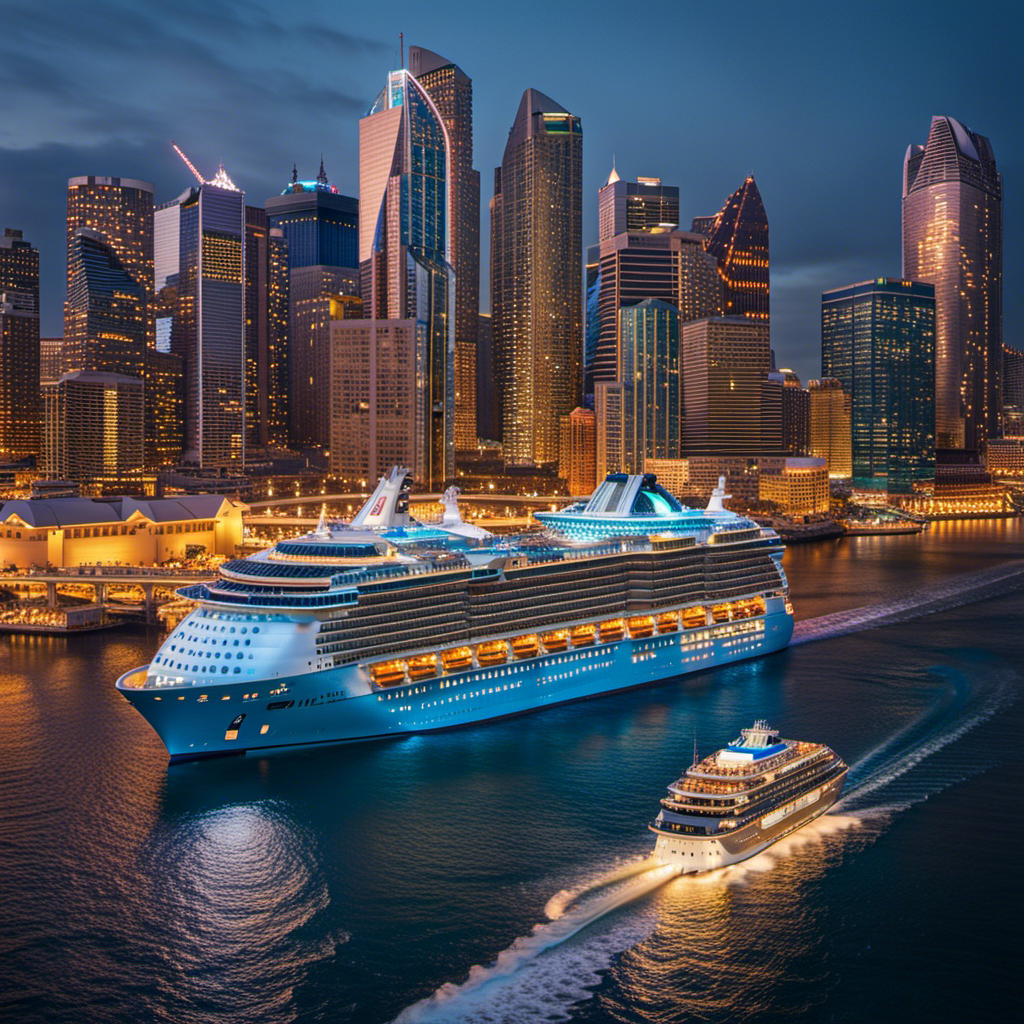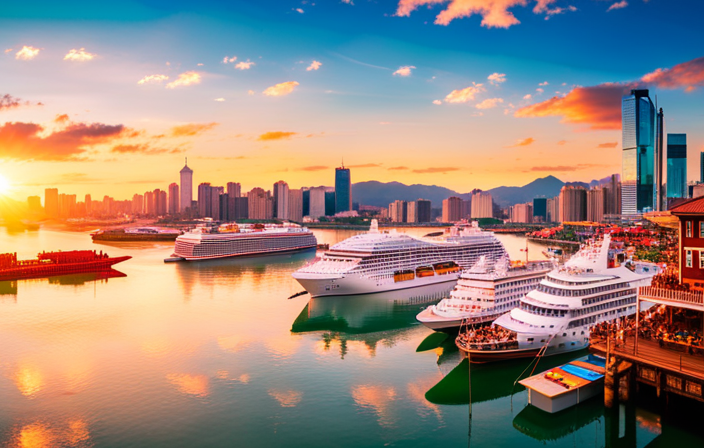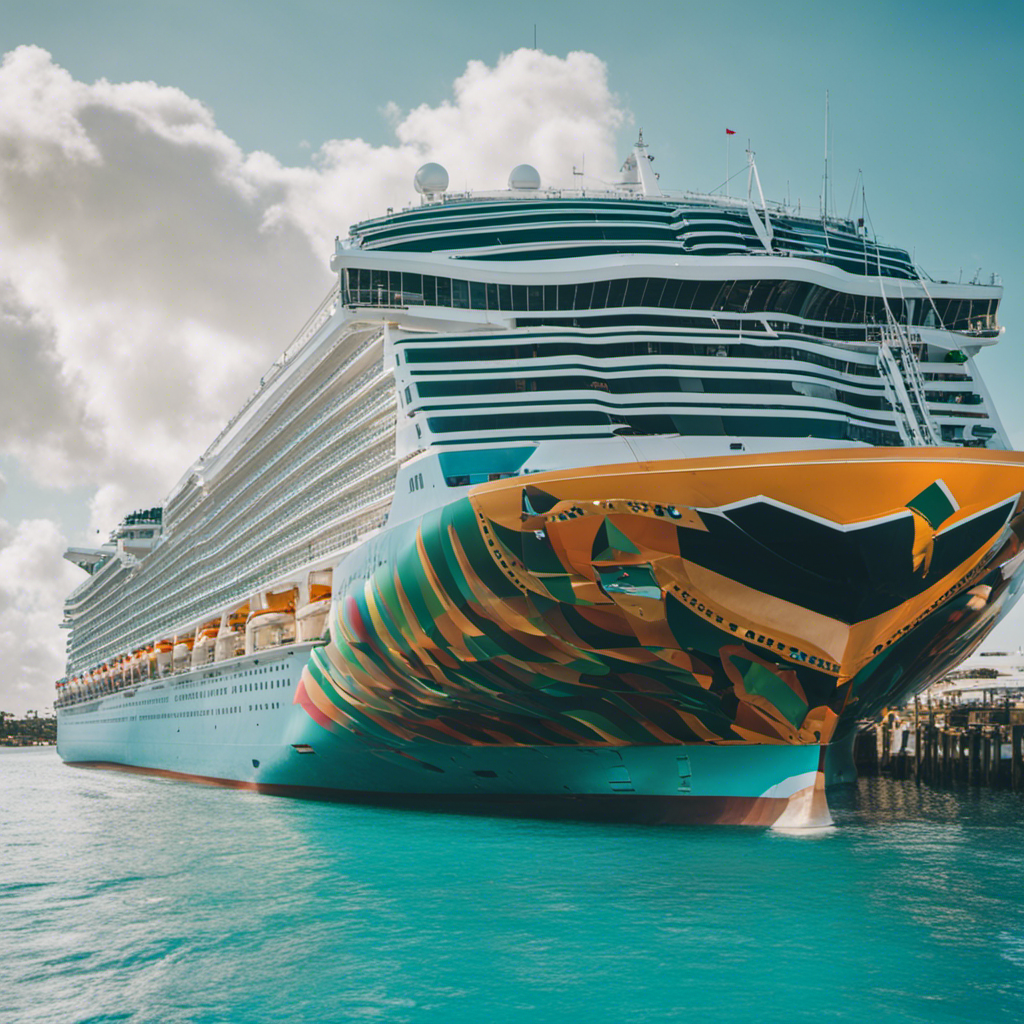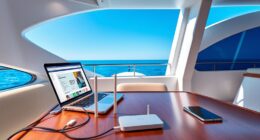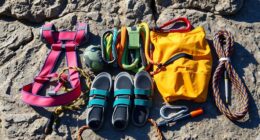Bonaire is a snorkeling paradise with 86 dive sites and stunning coral reefs. To make the most of your adventure, visit spots like Klein Bonaire and the Hilma Hooker wreck. Always wear water shoes to protect your feet and use a snorkeling vest for added safety. Navigational aids like yellow-painted rocks help you find shore access points. Remember to check the currents and avoid touching marine life. Don't forget to stay hydrated and use reef-safe sunscreen! For deeper insights on equipment and techniques, your next steps will reveal even more tips.
Key Takeaways
- Bonaire has 86 dive locations, mainly accessible from shore, with a National Marine Park Pass required for entry into protected waters.
- Top snorkeling spots include Klein Bonaire, Hilma Hooker wreck, and Lac Bay, catering to various skill levels.
- Use yellow-painted rocks to navigate shore access points along the southern shoreline for easy entry to snorkeling sites.
- Essential gear includes a well-fitting mask, open-heel fins, water shoes, and reef-safe sunscreen to ensure a safe experience.
- Plan your visit between March and April for optimal weather and visibility, enhancing your underwater exploration.
Overview of Bonaire
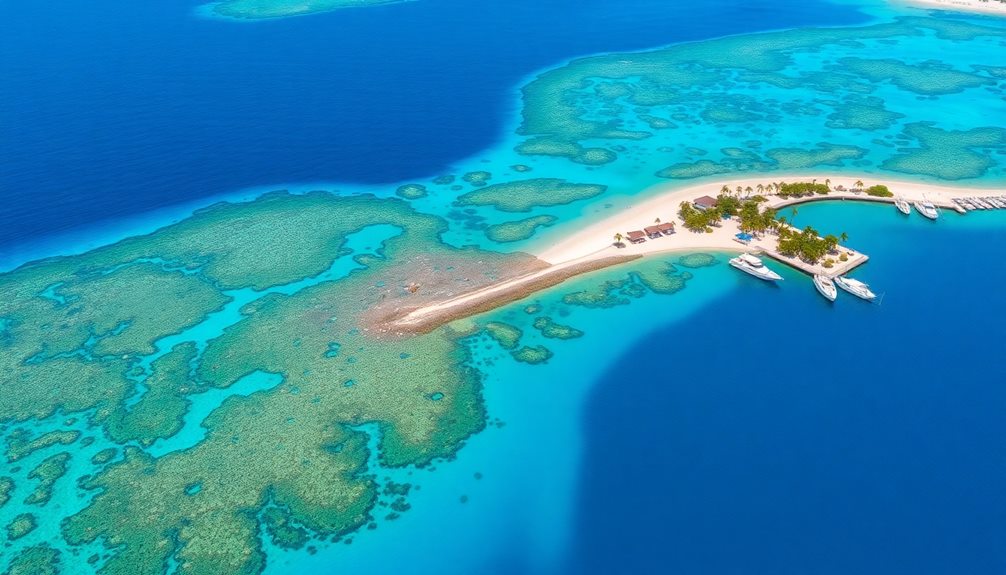
Bonaire is a stunning Dutch-administered island in the southern Caribbean, famous for its incredible diving and snorkeling spots. With a healthy reef system and abundant shore access, it offers 86 dive locations, most of which are free to access. This makes Bonaire a go-to destination for both divers and snorkelers enthusiastic to explore its vibrant underwater world.
While the island's snorkeling quality has declined in the last decade due to coral bleaching and environmental factors, you can still experience some of the best snorkeling in the region. Just make sure to plan your visit between March and April for ideal conditions.
The National Marine Park Pass is essential for accessing protected waters, which helps conserve Bonaire's unique marine ecosystems.
For those new to the area, finding a local dive shop can enhance your experience, offering gear rentals and guided tours. With shore diving being a popular option, you can easily hop into the water from various points around the island.
Whether you're a seasoned diver or a curious snorkeler, Bonaire's charm and beauty will captivate you.
Best Snorkeling Locations
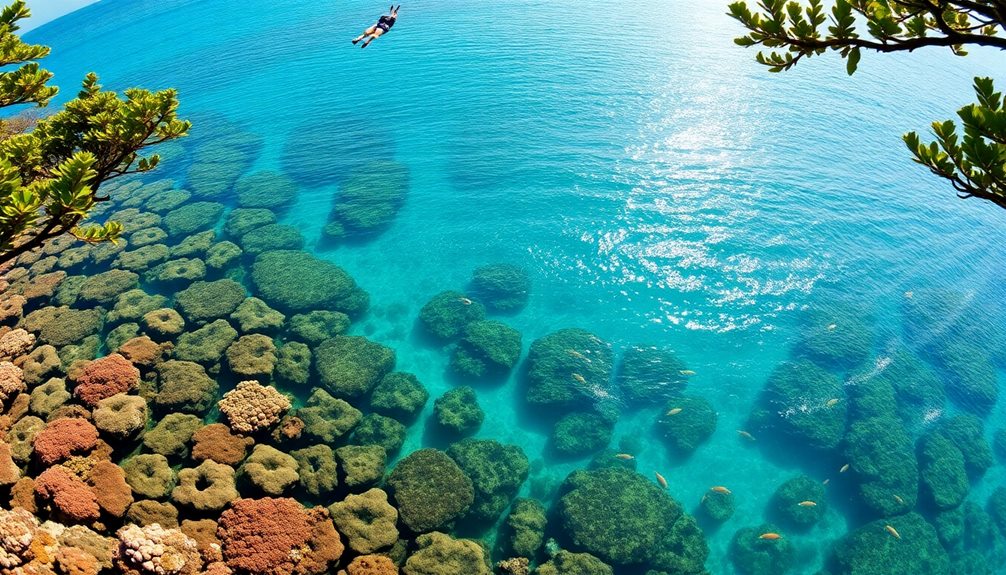
If you're ready to plunge into some of the Caribbean's best snorkeling spots, you'll find plenty of options in Bonaire. One must-visit location is Klein Bonaire, an uninhabited marine reserve. Accessible by boat, it boasts gentle sloping beaches and vibrant coral reefs, perfect for a memorable snorkeling experience.
For those seeking easy access, 1000 Steps is ideal, with stone steps leading you right into an expansive underwater world suitable for all skill levels.
If you're more experienced, check out the Hilma Hooker, a famous wreck site known for its excellent visibility but recommended only for advanced snorkelers due to depth and currents.
Families and beginners will love Lac Bay, which features the best shallow coral behind a barrier reef, easily reachable from Jibe City.
The Salt Pier offers an intriguing experience as you explore marine life beneath its structural pilings, with depths reaching up to 30 feet for those who want a bit more adventure.
With various shore dive sites and rental prices to suit different budgets, Bonaire truly offers something for everyone! Don't miss the chance to see these incredible things while snorkeling.
Unique Snorkeling Experiences
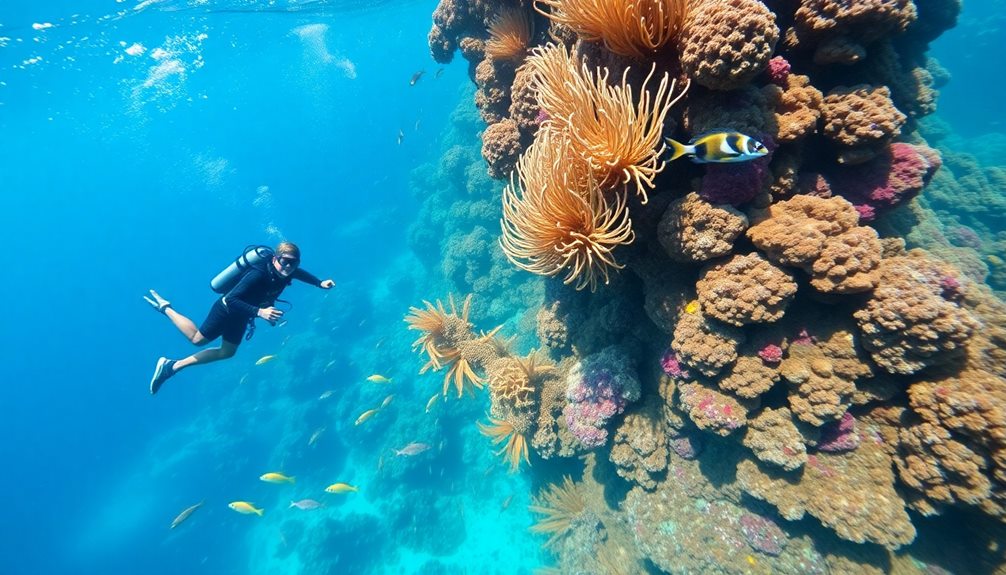
For those looking to elevate their snorkeling adventures, unique experiences await around every corner in Bonaire.
Consider night snorkeling at Divi Flamingo, where familiarizing yourself with the area enhances both safety and enjoyment as you explore the underwater world after dark. If you're feeling adventurous, head to Klein Bonaire, an uninhabited island north of town. Just be mindful of the notable currents there, and plan your snorkeling carefully for a safe experience.
Another must-visit is the Salt Pier. Here, you can plunge into a distinctive underwater environment, exploring marine life around structural pilings that attract a variety of species.
For a more scenic journey, try the one-way snorkeling routes between Windsock and Bachelors Beach, where you can leisurely float and soak in the beautiful surroundings.
To truly immerse yourself in Bonaire's vibrant coral ecosystems, combine visits to Karpata and Cliff. These are some of the best spots on the west coast, offering a rich exploration of the abundant marine life that Bonaire Snorkeling is famous for.
Each experience adds depth to your adventure, making your time in Bonaire unforgettable.
Access and Navigation Tips
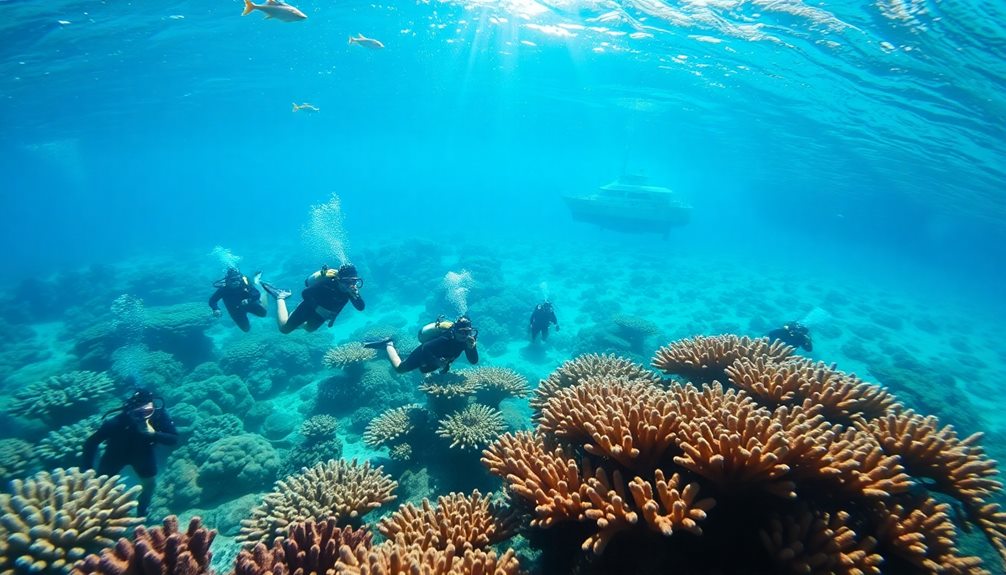
Finding your way around Bonaire's snorkeling and diving spots is straightforward, thanks to clear signage and convenient access points.
You'll notice yellow-painted rocks marking shore access along the southern shoreline, making it easy to locate your perfect entry point. Before heading out, don't forget to grab a snorkeling map, which shows you the best sites and their features.
Here are three tips to enhance your experience:
- Plan Your Transportation: Some sites, like 1000 Steps, have one-way roads. Arrange for a ride back to avoid any hassles.
- Consider Boat Dives: If you want to explore Klein Bonaire's uninhabited shores, water taxis can whisk you away from two departure points to amazing snorkeling spots.
- Parking Convenience: Many locations allow parking near the water's edge, so you won't have to walk far to reach that sandy beach.
And remember, if you need to rent gear, dive shops have everything you'll require.
A National Marine Park Pass is also a must for accessing protected waters, which you can buy online or in-store.
Enjoy your underwater adventure!
Safety Precautions for Snorkelers
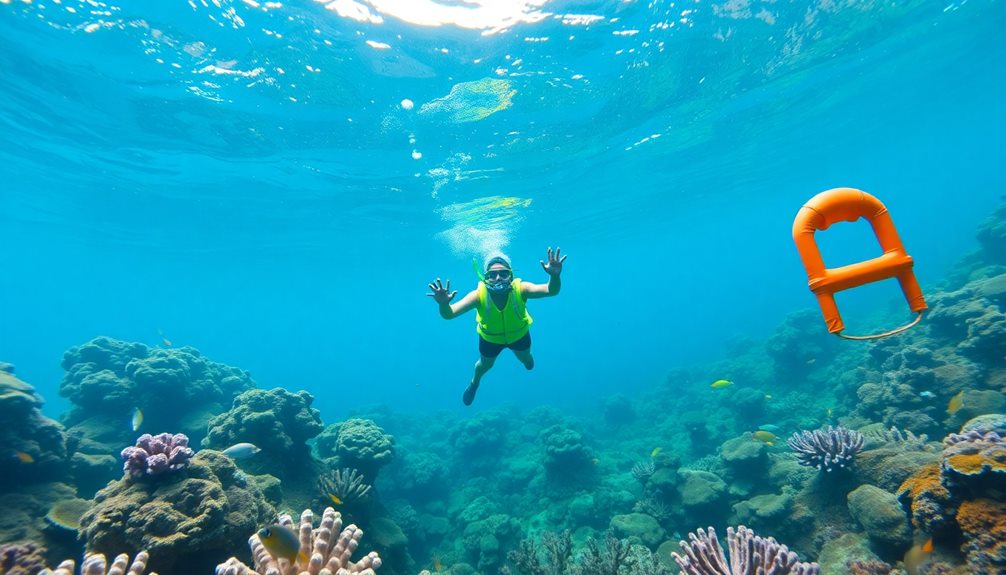
How can you guarantee a safe and enjoyable snorkeling experience in Bonaire? First, make certain you're aware of your surroundings and avoid touching coral or marine life. This protects both you and the delicate ecosystem.
When heading to the beach, wear water shoes to shield your feet from sharp objects and pesky sea urchins, especially when entering rocky shorelines.
Familiarize yourself with entry and exit points at your chosen snorkel spot, like Divi Flamingo, to guarantee a smooth return. If you're a beginner or not entirely comfortable in the water, consider using a snorkeling vest for added buoyancy. This can boost your confidence and help you feel more secure while exploring.
Don't forget to stay hydrated! Bring along water for day trips, particularly when venturing to areas like Klein Bonaire, where amenities can be limited.
Following these safety precautions won't only enhance your experience but also keep you safe while enjoying the stunning underwater world. Prepare well, and you'll have an unforgettable snorkeling adventure in Bonaire!
Travel Tips for Visitors
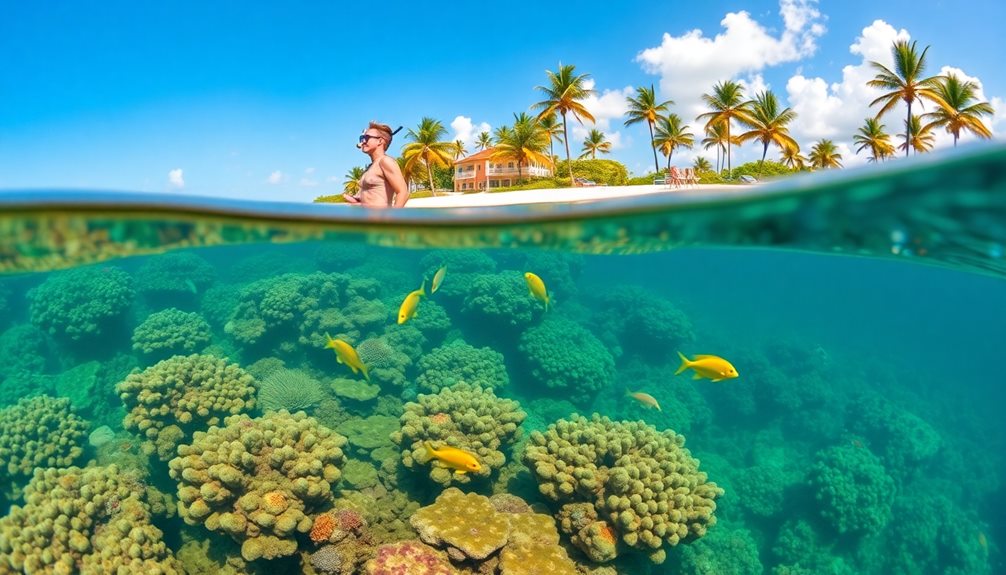
When planning your trip to Bonaire, timing can make all the difference, so aim for March or April for the best weather.
Don't forget to pack essential gear like protective footwear and plenty of water, especially for day trips.
With a rental car, you'll easily access the island's stunning snorkeling spots, ensuring a memorable experience.
Best Time to Visit
For snorkeling and diving in Bonaire, March and April are your best bet, offering calm conditions and excellent visibility. During these months, you'll experience the clear waters that Bonaire is famous for, making it easy to explore the vibrant marine life.
However, if you're considering a visit in October and November, be prepared for potential torrential rains that could disrupt your plans.
Here are three reasons why March and April stand out:
- Optimal Visibility: Enjoy stunning underwater scenes without murky waters.
- Calm Weather Conditions: Experience comfortable snorkeling and diving without the choppy seas.
- Access to National Marine Park: With your National Marine Park Pass in hand, you can explore protected waters with peace of mind.
While the average annual rainfall is around 20 inches, most of it falls from October to January.
So, if you're aiming for the best time to visit, stick to March and April for a memorable underwater adventure.
Don't forget to secure your National Marine Park Pass before diving into the incredible waters!
Essential Gear Checklist
Preparing for your underwater adventure in Bonaire means gathering the right gear to guarantee a safe and enjoyable experience. Start with a well-fitting mask and snorkel to prevent leaks and ensure comfort while exploring vibrant marine life.
Open heel fins are a must, especially for rocky entries, as they provide better control and comfort in varying conditions.
Don't forget your water shoes; they protect your feet from sharp objects and sea urchins when accessing shore entry points. If you're a beginner or unsure of your swimming abilities, consider bringing a snorkeling vest for added buoyancy, giving you the confidence to float comfortably.
Lastly, pack a guidebook or map detailing local dive sites and snorkeling tips. This will enhance your exploration, allowing you to navigate the underwater wonders of Bonaire with ease.
With this essential gear checklist in hand, you'll be well-equipped for an unforgettable experience in one of the Caribbean's top snorkeling destinations. So, gear up and get ready to plunge into the beauty that awaits beneath the waves!
Equipment Essentials for Snorkeling
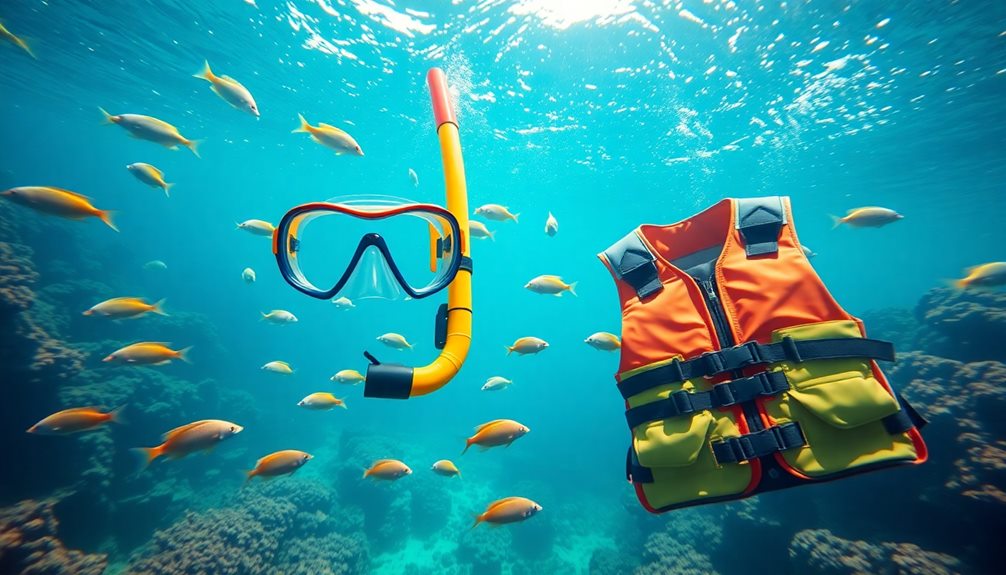
Before you hit the water, having the right snorkeling equipment is essential for a comfortable and enjoyable experience. Here are three must-have items that will elevate your snorkeling adventure:
- Well-fitting mask: A good mask prevents leaks and provides clear visibility, allowing you to fully immerse yourself in the beauty of marine life.
- Open heel fins: These are perfect for rocky entries, giving you better grip and foot protection as you navigate uneven surfaces.
- Water shoes: Protect your feet from sharp objects and sea urchins while entering and exiting the water.
Additionally, consider bringing a snorkeling vest. It enhances buoyancy and comfort, making it easier to float and relax as you explore local dive sites.
Whether you're a beginner or an experienced snorkeler, this extra support will help you focus on the vibrant underwater world without worry.
Conclusion
To sum up, exploring Bonaire's underwater world is like starting a vibrant adventure where every plunge reveals a new treasure. With its stunning snorkeling spots and unique marine life, you're bound to create unforgettable memories. Remember to stay safe, respect the environment, and gear up with the essentials. So grab your snorkel, embrace the crystal-clear waters, and immerse yourself in the magic that Bonaire has to offer. Your underwater journey awaits!
Alfons is the visionary leader and driving force behind Voyager Info’s success. As the Editor in Chief, he brings a wealth of experience and an unwavering passion for travel to the helm of our cruise-centric platform.
With a lifelong fascination for exploring new horizons, Alfons discovered his love for the ocean and cruising at a young age. From sailing across pristine Caribbean waters to embarking on daring expeditions to far-flung destinations, he has amassed a treasure trove of first-hand experiences in the world of cruising.

